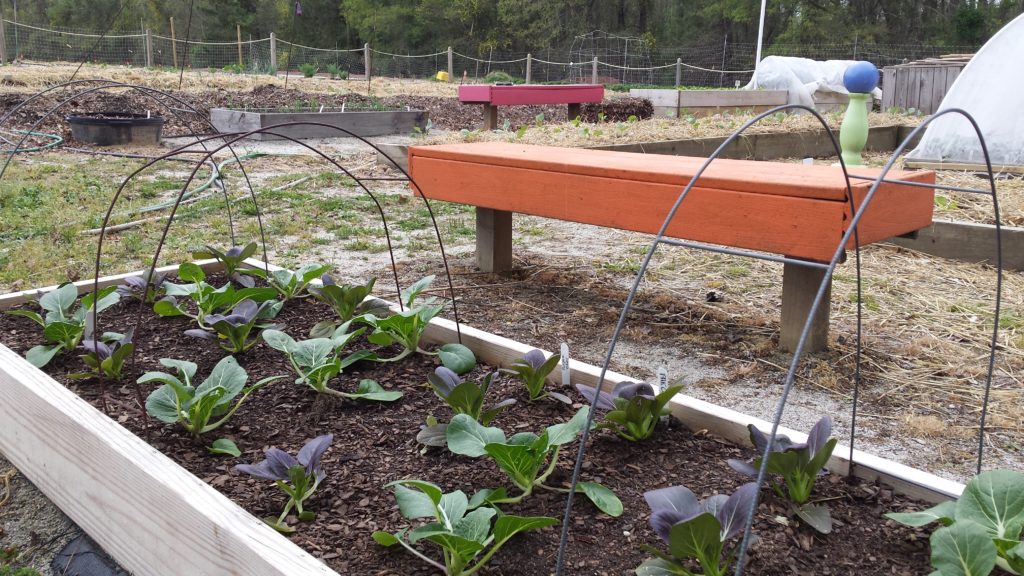Time to Plant a Fall Vegetable Garden
go.ncsu.edu/readext?720484
en Español / em Português
El inglés es el idioma de control de esta página. En la medida en que haya algún conflicto entre la traducción al inglés y la traducción, el inglés prevalece.
Al hacer clic en el enlace de traducción se activa un servicio de traducción gratuito para convertir la página al español. Al igual que con cualquier traducción por Internet, la conversión no es sensible al contexto y puede que no traduzca el texto en su significado original. NC State Extension no garantiza la exactitud del texto traducido. Por favor, tenga en cuenta que algunas aplicaciones y/o servicios pueden no funcionar como se espera cuando se traducen.
Português
Inglês é o idioma de controle desta página. Na medida que haja algum conflito entre o texto original em Inglês e a tradução, o Inglês prevalece.
Ao clicar no link de tradução, um serviço gratuito de tradução será ativado para converter a página para o Português. Como em qualquer tradução pela internet, a conversão não é sensivel ao contexto e pode não ocorrer a tradução para o significado orginal. O serviço de Extensão da Carolina do Norte (NC State Extension) não garante a exatidão do texto traduzido. Por favor, observe que algumas funções ou serviços podem não funcionar como esperado após a tradução.
English
English is the controlling language of this page. To the extent there is any conflict between the English text and the translation, English controls.
Clicking on the translation link activates a free translation service to convert the page to Spanish. As with any Internet translation, the conversion is not context-sensitive and may not translate the text to its original meaning. NC State Extension does not guarantee the accuracy of the translated text. Please note that some applications and/or services may not function as expected when translated.
Collapse ▲Summer is still on the minds of many of us, however, now is the time for planning a fall vegetable garden. We are fortunate with our climate in Wayne County that we can not only have a spring and summer garden but also can continue gardening and harvesting vegetables well into the fall.
Many cool-season vegetables we plant in early spring can also be enjoyed during the cool fall weather. August and September are the main planting times for a fall garden. Planting dates for vegetables can be determined by taking the number of days to maturity (typically found on a seed packet) and count backward from the average first frost date to determine the best time to plant. The average first fall frost date in the Goldsboro area is October 30. Vegetables that take longer to mature would be planted in early August while quick maturing vegetables would be planted in mid to late August.
Here is a list of some popular cool-season vegetables along with recommended time for planting in Wayne County:
- Beets: August 1 – 15
- Carrots: August 1 – 15
- Cabbage: August 15 – 31
- Cauliflower: August 15 – 31
- Collards: August 15 – 31
- Broccoli: August 15 – September 15
- Kale: August 15 – September 15
- Turnips: August 20 – September 15
- Radishes: August 25 – September 15
- Spinach: August 25 – September 15
- Lettuce: September 1 – 15
One challenge when starting a fall vegetable garden is having good seed germination in August when the soil can be dry and too warm. Waiting until September to start some fall vegetables can be a little cooler than in August. Some cool season vegetables like lettuce and spinach will not germinate if the soil temperature is over 85°F. There are a few tips you can try to have success in germinating seeds in warmer soil temperatures. You can plant seeds deeper because the moisture level is deeper in the soil and to avoid higher surface temperature. Mulching the seeded area will help keep the soil cooler and hold moisture to create more favorable conditions for germination. You will want to avoid mulches made up of large pieces which could harm seedlings as they break through the soil surface. Monitor germination and move mulch back away from seedlings if is appears to be inhibiting their growth.
Providing adequate moisture will be important when seeding a fall garden. Vegetables can be direct seeded, which refers to planting seeds rather than using transplants. If you do not have a water source available for irrigation, you may have more success in buying transplants instead of direct seeding.
Some summer vegetables like squash, corn, tomatoes, and cucumbers can be planted in late July to early August to have late harvest into the fall before frost. The major challenge with planting summer vegetables later and also planting cool season vegetables for a fall garden will be insect and disease problems. It is common for insects and diseases to be more abundant in the fall from a buildup of population during the spring and summer. Some practices that will help with pest problems in a fall garden include frequent scouting for pest, keep plants healthy so they are less susceptible to pests, and remove any plants from your garden that have stop producing so they do not harbor pests.
Don’t let your supply of fresh vegetables stop with the end of summer. You can begin planning and planting now and continue to enjoy homegrown vegetables well into the fall.
Jessica Strickland is an Agriculture Extension Agent, specializing in horticulture for North Carolina Cooperative Extension in Wayne County.
Learn More!
- Sign up for Wayne County Extension Gardening email list to receive timely gardening tips.
- Learn more by following us on Facebook and Instagram





